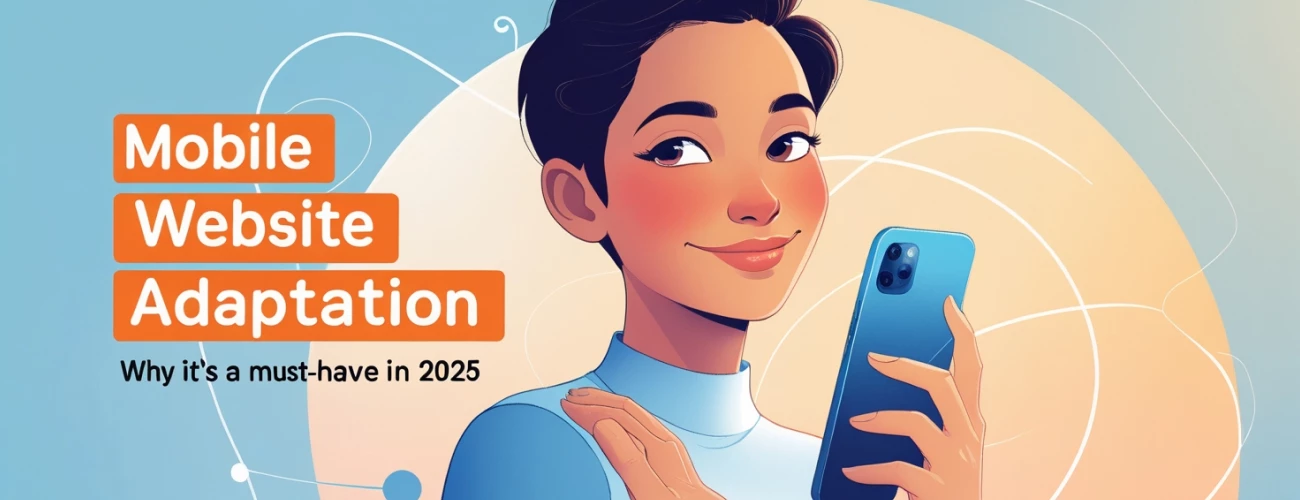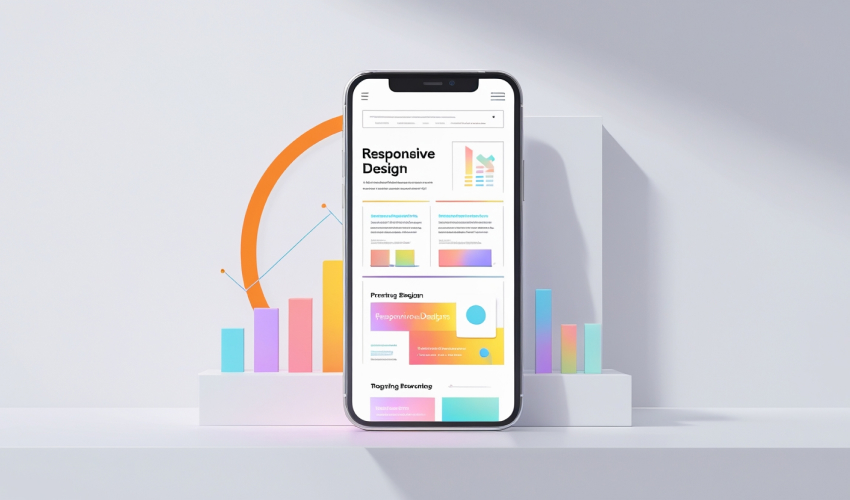Mobile website adaptation: why it's a must-have in 2025

Ignoring mobile adaptation of your website in 2025 is like closing the door on your customers and sending them to your competitors. Want to know why it's so important and how to quickly make your resource convenient for any device? Read this article.
Growth in mobile traffic
The main reason to pay attention to smartphones is that the number of users accessing the internet from their phones is growing rapidly. Statistics on mobile device usage for February 2025 speak for themselves:
- 63.05% of all global internet traffic is generated by smartphones, which is 8.8% more than in December 2024;
- 96.3% of users access the internet via their phones;
- according to analysts' forecasts, in 2025, users will use smartphones to access the Internet 37% more often than in 2024.
These figures emphasize that mobile traffic is no longer just a trend, but a major component of users' Internet activity. Website owners cannot ignore this.
The impact of mobile adaptation on SEO
Mobile optimization affects a resource's position in search results:
- if pages display poorly on smartphones or take too long to load, the likelihood of reaching the top of the search results is extremely low. Accordingly, this reduces the amount of organic traffic;
- a well-optimized mobile version of the site provides quick access to content on a smartphone and improves user behavior. They spend more time exploring it and are less likely to leave immediately after visiting. Google takes this into account and raises such sites higher in search results.
Thus, in order for a website to be noticed by search engines, it is important that mobile SEO takes into account the interests of smartphone owners.
Ways to adapt a website for mobile devices
There are various methods to ensure convenient viewing of a website from phones.

Responsive design
Responsive design is a technology that allows a portal to flexibly change its structure and appearance based on the size of the display:
- interface elements are rearranged;
- fonts and buttons become touch-friendly;
- images are displayed at an optimal size and do not overload the screen.
Adaptive design allows you to comfortably view the site on any gadget. This approach appeals to customers and increases the chances of the resource getting into the TOP search results.
Mobile version of the site
Sometimes you need to create a separate site specifically designed for smartphones. It is usually located on a subdomain or in a separate folder. A mobile site contains:
- a simplified interface;
- faster loading;
- adapted content.
A mobile version is especially relevant if the main site is too heavy or complex for smartphones, and adaptive design is not enough. It is important to remember that creating two separate versions will not only cost a lot of money. They also need to be kept up to date, synchronized in terms of content, and monitored to ensure they are working correctly.
Progressive web apps (PWA)
This is the name given to the technology that turns a regular website into a convenient mobile app. Users access it through a browser, but the resource has a number of properties that are characteristic of native programs:
- users can add a shortcut to the website on the home screen for quick access. This allows them to open the portal via the shortcut without having to download a separate program;
- PWA caches data, so some functions and content remain available even without an internet connection;
- the resource can send push notifications, just like regular apps. Currently, access to this option is limited to iOS;
- the site launches quickly and works even with unstable internet, providing a comfortable user experience.
Progressive web apps (PWAs) are especially relevant for online stores, services, and delivery services — anywhere where speed, convenience, and the ability to quickly access the site are important.
Recommendations for mobile adaptation
To make your resource user-friendly, consider the following tips for mobile adaptation:
- responsive design is more suitable for news portals and blogs, while online stores are better off using PWA or a separate version of the site;
- optimize loading speed — smartphone users value instant access to information;
- make navigation simple and intuitive — large buttons, a user-friendly menu, and a minimum number of actions;
- check the usability of forms so that customers can easily interact with the site and enter the necessary information.
To make your resource user-friendly, contact the IT company Megasite. We develop mobile applications and websites in Kyiv and other cities of Ukraine, using the best practices of mobile optimization!
Your project
Call/write:


